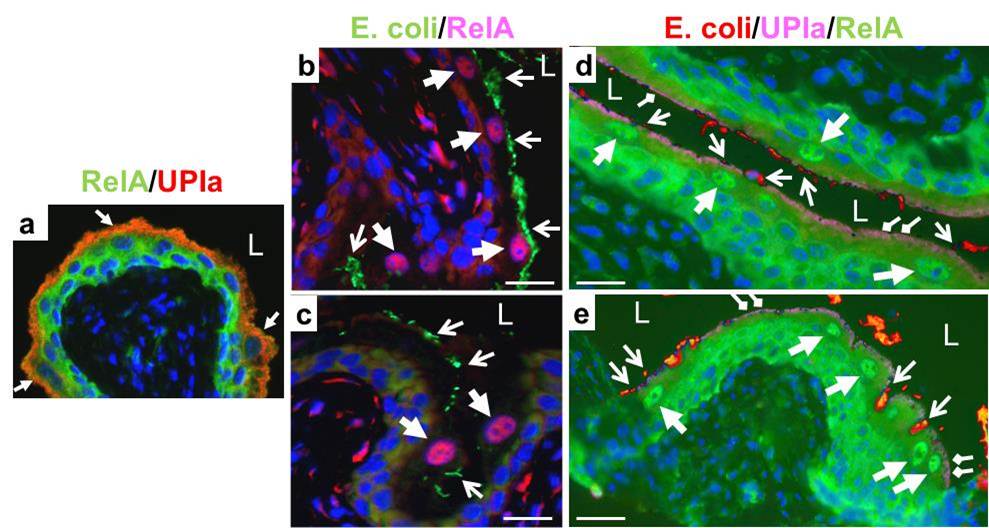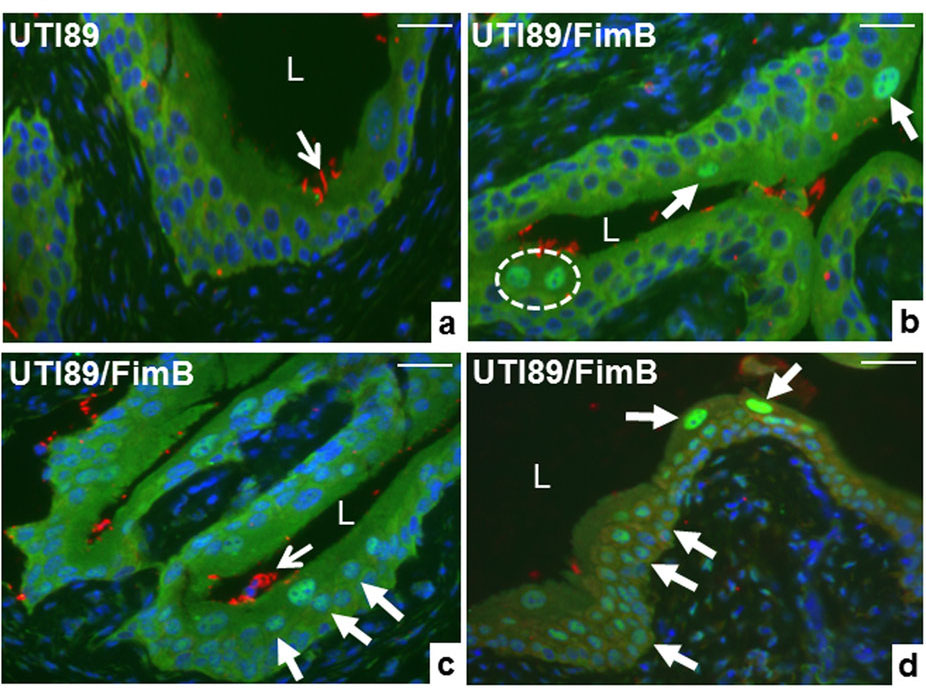Multinucleated Urothelial Umbrella Cells as Initiators of Innate Host Defenses Against Uropathogenic E. coli
Yan Liu, Feng He, Ellen Shapiro, Herbert Lepor and Xue-Ru Wu*.
Department of Urology, New York University School of Medicine, New York, NY, USA.
BACKGROUND: Mammalian urothelial surface is covered by highly differentiated and morphologically distinct superficial cells, also named umbrella cells. These cells contain multiple nuclei but, with the exception of a role in permeability barrier, no other function has been attributed to these specialized cells. This study was undertaken to explore the in vivo role of urothelial umbrella cells in innate host defenses against uropathogenic E. coli (UPEC).
METHODS: Female mice (7-9 weeks) were inoculated via the transurethral route with type 1 piliated UPEC strains (UTI89, NU14, CFT073), isogenic mutant strains lacking FimH adhesin (UTI89-1, NU14-1) or expressing a mutated FimH (UTI89-Q133N), or a non-UPEC laboratory strain (HB101). Translocation of p65 subunit of NF-kB from cytoplasm to nucleus, an indicator of NF-kB activation, was assessed by confocal immunofluorescent microscopy of cross sections and whole-mount bladders. Production and urinary secretion of proinflammatory cytokines by urothelial cells was determined by multiplex ELISA. The effects of TLR4 status on p65 translocation were determined using TLR4 mutant mice and isogenic control mice.
RESULTS: Inoculation of mouse bladders with UPEC induced rapid translocation of p65 from the cytoplasm into the nucleus, peaking at 1 hour and diminishing after 6 hours post-inoculation. The nuclear translocation of p65 was confined to the umbrella cells, sparing intermediate and basal cells of the urothelium completely. When one nucleus had nuclear p65, all other nuclei (from 2-10) within a cell also did so, indicating a highly synchronous nature of NF-kB activation in multinucleated umbrella cells. The p65 nuclear depended on urothelial adhesion of UPEC, because non-UPEC laboratory strain and mutated UPEC strains lacking FimH or expressing an adhesion-deficient FimH mutant or UPEC strains in the presence of D-mannose failed to adhere to urothelial surface and failed to trigger p65 nuclear translocation. The p65 nuclear translocation coincided with a marked increase of urothelial and urine proinflammatory cytokines (TNF-alpha, IL-1alpha and IL-1beta). Finally, TLR mutant mice had 3 times less p65 nuclear translocation than the isogenic controls.
CONCLUSIONS: These results represent the first demonstration that the umbrella cells of the urothelium play a critical role in triggering innate host defenses against UPEC, and suggest that the multiple nucleation of these cells serves an important function in amplifying mRNAs encoding proinflammatory signals to combat invading pathogens.



Back to 2016 Fall Congress
